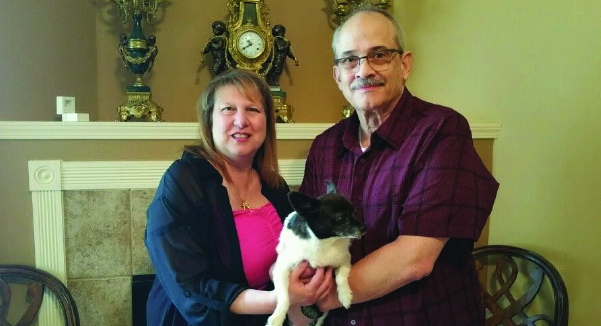Military Vet Offers Encouragement to Other Vets With Arthritis
Leading a support group to help others has helped this veteran manage his arthritis pain.
Allan Silberstein decided he wanted to help others who have gone through the kind of pain he has experienced. That’s why he raised his hand to co-facilitate our Live Yes! Connect Group for past and present members of the U.S. armed forces, to offer guidance in their journeys.
Al has no doubt that his long career in military service led to his recent challenges with rheumatoid arthritis and osteoarthritis. “All the push-ups, sit-ups, running, gun fire, lifting heavy things all the time and riding motorcycles — those are absolutely related to my current conditions,” Al says. “I don’t believe the military fully understands the impact of physical strains on its members over time. I’m 100% disabled now, and I believe it’s from the years of abuse on my body.”
Al joined the U.S. Army in 1975 and was on active duty for 26 years before switching to civil service for an additional 10 years. He worked his way up to sergeant first class/E-7, including time spent as a medic while also pursuing his master’s degree. As an education specialist, he assisted the Army Recruiting Command to enlist future soldiers while helping educators understand the tools that have been developed to assist them in teaching. Today, he’s happily and totally retired.
Al’s major interest now is spending quality time with his wife, Angela (pictured here with him and their “protector” puppy). “That’s not a hobby. That’s a way of life. And having a partner is a good way of life.”
How Arthritis Has Affected Al
In retirement, Al admits: “I’m a structural mess. I have osteoarthritis and rheumatoid arthritis. I’m on several different medications, including infusions for arthritis and low immunoglobulin levels. I’ve had two knee replacements and three hip replacements. My spine is fused.” He also has three implanted stimulators to help him manage his conditions.
Al says his bond with the Arthritis Foundation just fell into place. “I don’t like to get involved in these things,” he says. “But if I can connect with my military brethren with arthritis, and help them out, like this Arthritis Foundation opportunity has given me, that’s my calling. I’m a proponent of the holistic approach. A lot of people think a pain pill is what they need. But I want to help them understand there are other options besides narcotics unless absolutely necessary.”
Why did he decide to help start this Connect Group? “I want this group to be a safe place for participants to share their thoughts, without judgment. And to be able to talk openly and honestly about their experiences,” Al says.
Try These Alternatives to Help Relieve Pain
Al also recommends considering other alternatives. “Neurostimulation has been around for about 30 years. It affects the nerves and redirects the pain stimulation to offset things like the tingling sensation you have in your arms and legs or pain.”
“Music is another great distraction,” Al says. “Or getting involved in an organization that helps you understand and deal with the pain. Some people might like gardening, some people may like doing jigsaw puzzles, others may like going to the movies. Whatever that is, it’s an alternative to a normal routine and may have a positive impact in what they're dealing with.”
Mindfulness may help, too. “Mindfulness will help you in understanding. It will give you a place to go, to help you control and live with the disease better. I'm a big proponent of mindfulness.”
Al recommends the Arthritis Foundation’s resources for help. “The Foundation’s plethora of resources is fabulous, which includes information about what the Arthritis Foundation/Veterans Affairs partnership provides,” Al says. “They help open your mind to possibilities you may not have thought about. In the end, it’s all about attitude. And we control that.”
Learn more about the Arthritis Foundation’s partnership with the U.S. Department of Veterans Affairs, tune in to the Arthritis and the Military webinar and get more insights into how arthritis affects veterans, as well as pain management solutions.
Story of Yes
Say Yes! Share Your Story
One of the most powerful things you can do to help others living with arthritis is share your story. If you have arthritis, care for someone who does or are making an impact in the arthritis community, your experiences can help someone who may feel alone. Whether you're a patient, caregiver, donor, volunteer or researcher — you can be an inspiration by sharing your Story of Yes.
Share Your StoryArthritis Foundation Directs Post-Traumatic Osteoarthritis Trial
Tune In to the Webinar on Arthritis & the Military: The Mental Health-Pain Connection
Stay in the Know. Live in the Yes.
Get involved with the arthritis community. Tell us a little about yourself and, based on your interests, you’ll receive emails packed with the latest information and resources to live your best life and connect with others.

 By Tony Williams | Reviewed Oct. 12, 2023 | Published Feb. 2, 2023
By Tony Williams | Reviewed Oct. 12, 2023 | Published Feb. 2, 2023